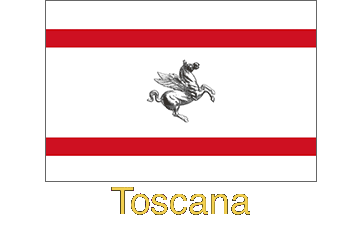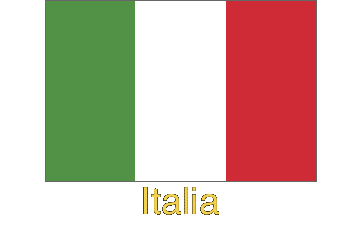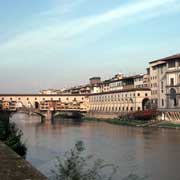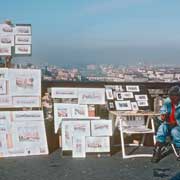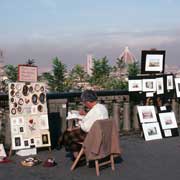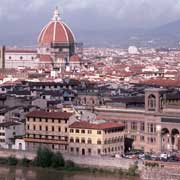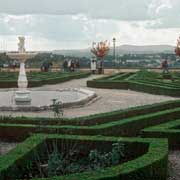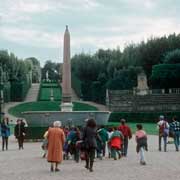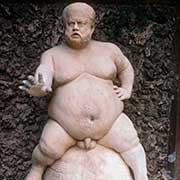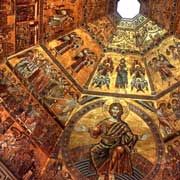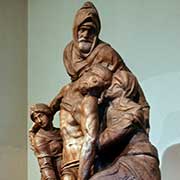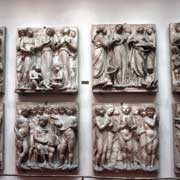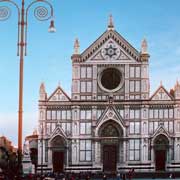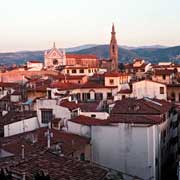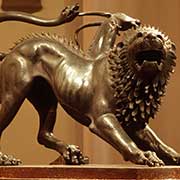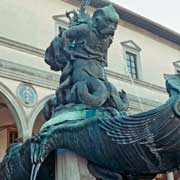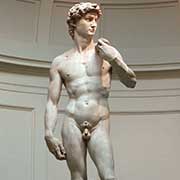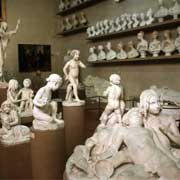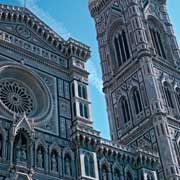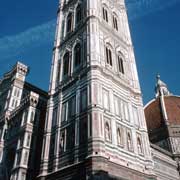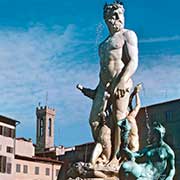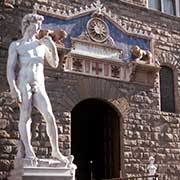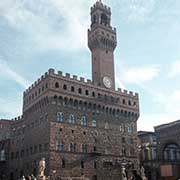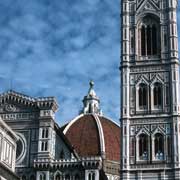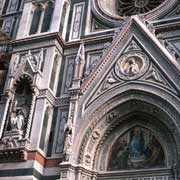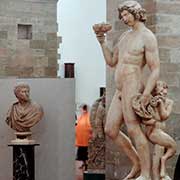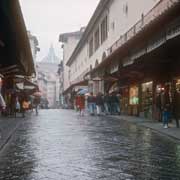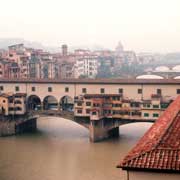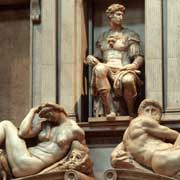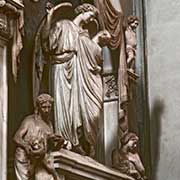Photos of Florence, the Renaissance city, Italy
Florence, the Renaissance city
Florence (Firenze), a city of about 400,000, sits on both banks of the Arno River in central Italy. It is the capital of Tuscany (Toscana) and the birthplace of the Renaissance, a period from about 1300 to 1600. Some of the greatest painters, sculptors, and writers in history lived and worked here. Painters and sculptors like Leonardo da Vinci, Giotto and Michelangelo produced some of the most magnificent paintings and sculptures ever made. The famous astronomer Galileo also worked here.
you may then send it as a postcard if you wish.
Today, Florence is visited by nearly a million tourists each year to see its splendid art galleries, churches and museums. The city has an area of about 100 km². It is the centre of a rich farming region, famous for its wines. The oldest part of Florence lies in a small area divided by the Arno. Most of the city’s famous buildings are on the right bank, north of the river. Six bridges connect the right bank with the Oltrarno on the other side. Goldsmiths and jewellery shops line one of these bridges, the Ponte Vecchio, constructed in 1345. The other bridges were destroyed during World War II (1939-1945) by retreating German troops but have been rebuilt since then. The present Ponte Santa Trinita is an exact reconstruction of the original bridge, which had stood since 1570.
The Etruscans, a tribe that probably migrated to Italy from West Asia, built the first settlement in Florence about 200 BCE. Their settlement was destroyed in 82 BCE following a Roman civil war, and in 59 BCE Julius Caesar founded the colony of Florentia (“blossoming”). After 1000 CE, it developed into a city-state. In the early 1400s, the wealthy Medici family gained control of Florence, controlling central Italy. It achieved its greatest splendour under the most famous Medici, Lorenzo the Magnificent, who ruled from 1469 to 1492. Members of the Medici family governed the city almost uninterrupted until 1737. Florence was the capital of the newly united Italy from 1865 to 1870, and large piazzas just outside the historic centre of Florence were built at that time.
In the Second World War, several ancient palaces were destroyed during the fight for Florence; most of the city’s art treasures escaped unharmed, but in 1966, a flood damaged books, manuscripts and valuable works of art. Many countries helped with restoration work, and Florence has become a world centre for studying and preserving the arts. In May 1993, a car bomb exploded outside the Uffizi Gallery; several artworks were destroyed and many others badly damaged. Fortunately, the bulletproof glass installed to protect important works of art saved many of the paintings.
